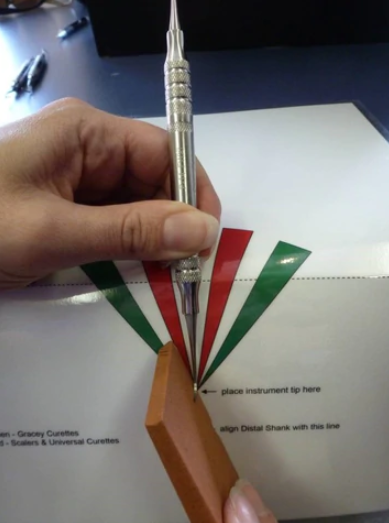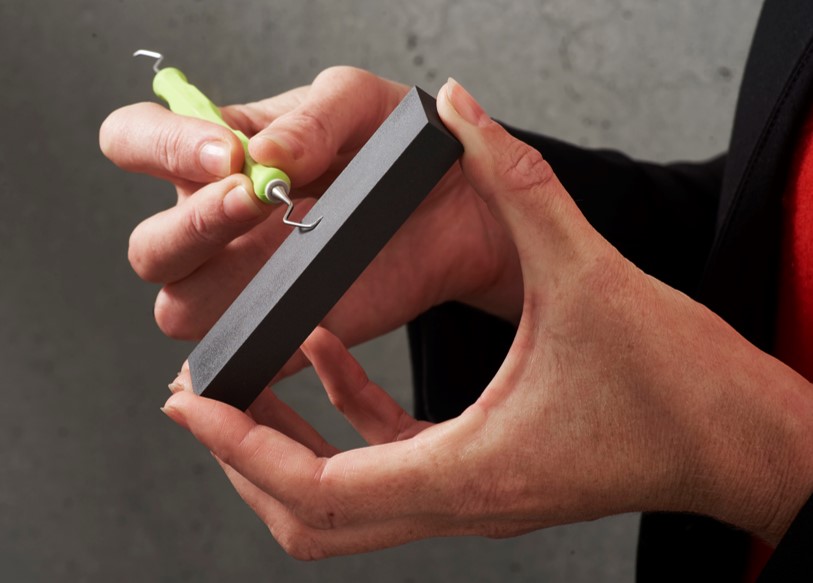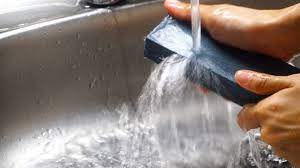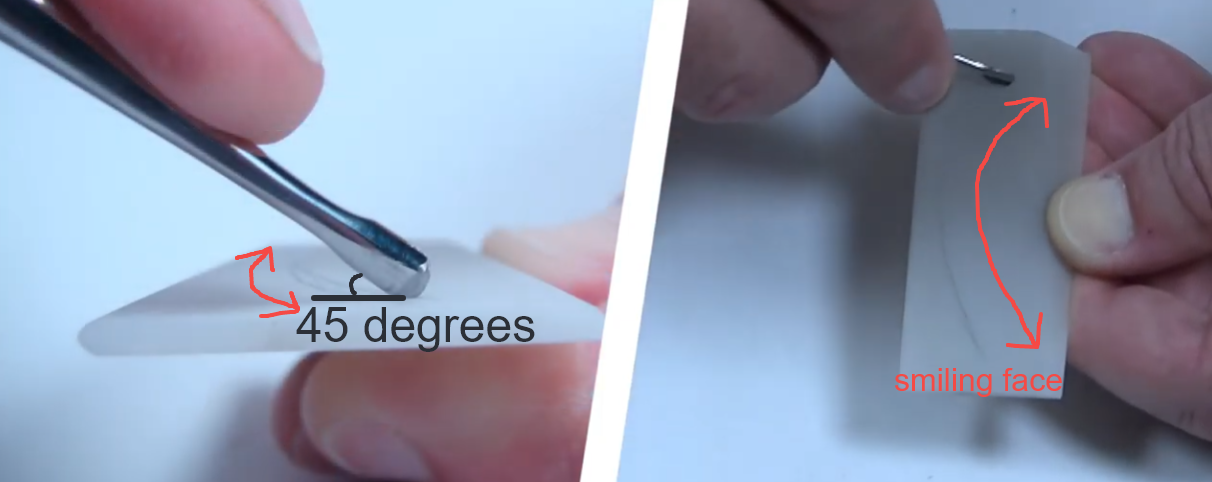Curettes and elevators, as we all know, must be cleaned and sterilized, but it appears that only a few individuals are concerned about the problem of curettes and elevators growing dull through time and use. Curettes and elevators that are dull impede practitioners from doing their work as soon as they could. What’s worse, dull curettes and elevators may cause the practitioners to use excess force, which is hazardous to patients and causes severe hand, wrist, neck, shoulder and back pain in practitioners. Therefore, curettes and elevators must be sharpened on a regular basis.
What are sharpening stones?
Sharpening stones are used for grinding and honing the edges of steel tools and utensils. They can be formed of natural quarried materials or man-made materials and come in a range of shapes, sizes, and materials. Generally, the finer the grit, the denser the material, which means a finer finish on the surface of the tool and slower cutting. The density of the grains is usually expressed as a number in grits. The greater the number, the higher the density and the smaller the grains.

How to sharpen curettes and elevators with a sharpening stone?
Sharpen curettes:
Reset the template 20 degrees to accommodate the specific design of the curettes. Hold the instrument against the side of the counter with its distal shank vertically aligned with the tip at a lower position and placed at the point where the angles meet, with the sharpening template folded over the side of the counter. The working tip should face the operator and be perpendicular to the table. Place the sharpening stone on the blade at the angle indicated on the template and move it up and down against the blade while maintaining the precise angle. Any rough edges can be removed with a fast flick of the conical surface of the sharpening stone over the face of the instrument.


Sharpen elevators:
Hold the instrument as you would for a tooth extraction (index finger controls the working end) and at a 45-degree angle to the sharpening stone, perform a ventral wrist rock motion, and rotate the instrument until the concave side of the instrument faces the opposite wall , and then repeat in the opposite direction, simply drawing a smile.
How to clean a sharpening stone?
Clean the sharpening stone with honing oil.
Apply a small amount of honing oil to the sharpening stone with your finger or a soft toothbrush in small circular motions.
When you see metal flecks rising from the pores of the sharpening stone, wipe the stone with a rag or paper towel to remove all metal filings. Rinse the stone under running water, and then dry it with a rag or paper towel.

*Tips: Do not use soap or anything other than water to clean it.
Honing oil provides lubrication for the sharpening stone, reduces friction and prevents metal particles from embedded in the sharpening stone.




